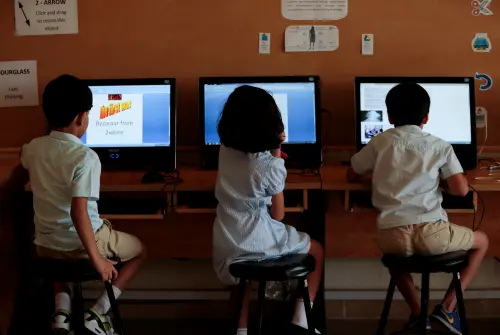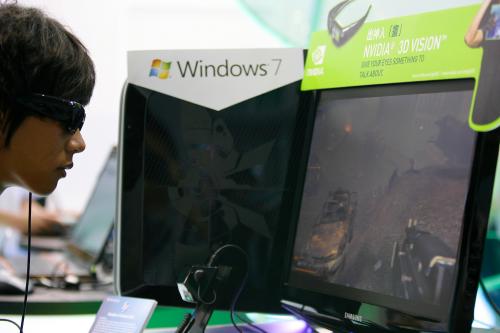This is not the first time when technological advances have created a virtual riot in homes, schools, and offices. When telephones were first introduced in the late 1800s, debates ensued about whether they would interfere with office comradery and whether clients would find a call more off-putting than a face-to-face conversation. Television caused a similar stir as scientists and families debated whether the old-fashioned definition of screen time would create a generation of couch potatoes who could no longer think or communicate. So, the current spat over a more modern “screen time” that includes television, smartphones, tablets, and the varied media developed on these platforms is really nothing new. Yet, the debate rages on: Is screen time in its modern guise bad or good for children—and for us?
The past few weeks have seen a flurry of new pieces speaking to the hazards or benefits of screen time. In January, Jordan Shapiro released his new book, “The New Childhood: Raising Kids to Thrive in a Connected World.” In this beautifully written text, Shapiro argues that screen time is here to stay and that children must merely learn how to navigate it well so that they do not overdose or view content that is not healthy for development. Again—not new. Similar discussions were popular as televisions became an indispensable feature of home life. The science, however, reassured us. If time on the tube could be monitored and we could ensure that our young children were not watching gunfire and gang fights, some kids could even benefit from educational TV. In short, the results suggested that “Sesame Street” and “Blues Clues” were great, and the nightly news should be avoided. However, the picture that emerged was more nuanced than “Is television bad or good?” and the answer to the question became “It depends.”
The crop of papers that appeared in the past few weeks suggest this more nuanced approach for digital screen time. On the one hand, the Royal College of Paediatrics and Child Health in London noted that children between the ages of 11-24 were spending approximately 2.5 hours on the computer, 3 hours on their phone, and 2 hours on the television per day. Did that amount of viewing hurt them in some obvious and measurable way? Looking at 940 research abstracts, the Royal College did find associations—though not causal links—between screen time and a less healthy diet, less energy, and higher obesity rates. There were also data linking screen time to poorer mental health. Yet, in the last week, a report also suggested that even these associations are weak at best, with new data touting that teen engagement with social media (screen viewing) is not associated with depression.
The inconclusive results and contradictory findings led the Royal College to conclude that a causal chain between screen watching and bad outcomes could not be established. It thus recommended that we find balance between screen and non-screen time—a balance that is dependent on the nature of the child (temperament), the child’s age, and the content in question.
This advice is consistent with Shapiro’s take. In the past few weeks, however, we have also seen several new studies that continue to raise a red flag. In one, we learn that increased face-to-face interactions emerge when we put Facebook use on hold for a year. In another, we learn that when we carry our phones in our pockets, have them on a desk in front of us, or have them more distant from us—in another room—we get different results on cognitive tasks. As you might guess, we do better when our phones are in another room. And at the end of January, we were told by author Sheri Madigan and her colleagues in the pediatric journal JAMA that screen time at 24 months of age relates to lower outcomes at 36 months and that screen time at 36 months relates to lower performance on a developmental screening task when the same children were 60 months of age. This latter study suffered from a few limitations that the authors themselves own: They lumped all screen time—computer, gaming systems, television—together and the effects they report, while significant, were not strong. Nonetheless, the results were suggestive: More screen time does likely reduce other activities children need to participate in to learn and grow.
What are educators and parents to do with this flurry of messages? Perhaps it is time for that more nuanced approach. Screens—be they television or computers—can transport us to places we have only imagined. They can present narratives that enrich our understanding of the world. At the same time, they can eat up precious time and draw our attention away from important human-to-human contact.
To date, the science cannot definitively say that there is a threshold for screen time use after which it is harmful for children. What the science can tell us, however, is that face-to-face interactions are critically important for development and that sometimes the digital technology gets in the way. When adults model poor screen manners by picking up a phone call in the middle of a conversation and fail to teach children how to wisely choose among social media options, then they do so at their own risk. It is our job as adults to help children wisely choose which programs to watch and for how long. Shapiro suggests that when we do this, we will need less surveillance of our children and their digital habits. We can become more like mentors, guiding children to make smart choices until they are old enough to do so—all while protecting their time to engage in crucial human relationships and generate their own imaginative worlds.
The Brookings Institution is committed to quality, independence, and impact.
We are supported by a diverse array of funders. In line with our values and policies, each Brookings publication represents the sole views of its author(s).










Commentary
Screen time for children: Good, bad, or it depends?
February 6, 2019